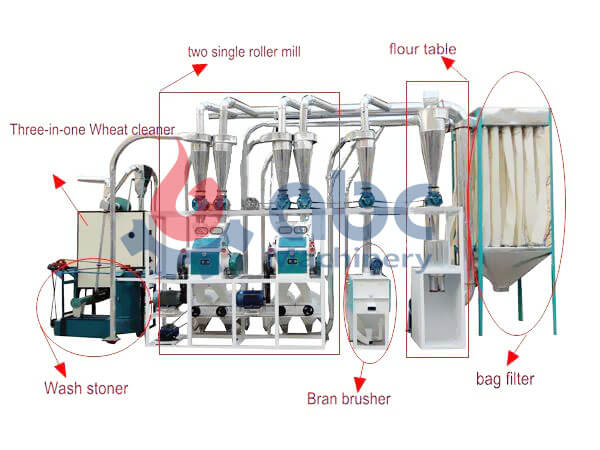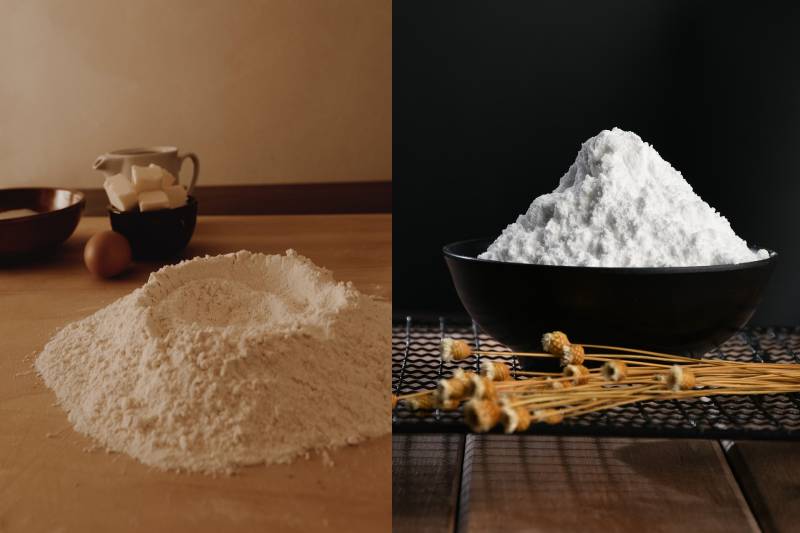We often hear from our parents that Maggie isn’t good for our health as it is made of Maida or Refined flour. But somewhere inside, we know that Maggie is essential for our chhoti chhoti bhukh and can be made in just 2 minutes. Even our parents binge over it. But wait, have we ever tried to know why it is called unhealthy? This blog is specially written to clear all your doubts. You’ll get to see the meaning of All-Purpose flour, what is flour made of and most importantly, the difference between atta and maida.
So let’s see the dishes made from maida are worth eating or not?
Meaning of Refined Flour
Initially, let’s get very clear that Maida, refined flour, all-purpose flour or white flour are all the same and is a part of wheat grain that has no germ or bran. It is white and has a fine powdery consistency than that of wheat flour. It is majorly used for making snacks and the likes as it has a longer shelf life with more elasticity. It has a smooth texture and is refined multiple times to remove husks.
Origin of Flour

It is well known that maida is considered a prominent ingredient in India. Every culture or religion has occupied one or more dishes made of the maida. Like Punjabis love Chhole Bhature where Bhaturas are made of maida, youth has a huge crush over momos ( made by Maida), and how can we forget Naans? You cannot be an Indian if you don’t love Naans(made of maida).
Surprisingly, maida came to India in the form of Naan. Maida is a part of Muslim cuisine as it arrived here with the Muslim traders and rulers. It did penetrate South of the Vindhyas, and as a result, Malabar Parotha of Kerala got introduced.
Flour Making Process

Making maida flour may vary from country to country or mill to mill, but here we are going to talk about the most frequent process of making maida flour in India.
Step 1: Filtration
The wheat grains are filtered multiple times to remove dust particles, husks, stones from that particular batch of grains.
Step 2: Bran Separation
After filtration, the grains are adequately washed by water to separate the bran from the endosperm.
Step 3: Grinding
Grinding is a process that takes place after the separation of the bran from the endosperm. The endosperm is now turned into fine powder. The process is repeatedly performed to break down the wheat gram into flour, coarse particles and intermediate particles.
Step 4: Reduction Rolling
The intermediate particles move through the reduction rollers and are turned into fine flour.
Step 4: Sifting
The sifting process helps in cleaning the flour. The fine flour passes through the sifters, which separate it from the remaining particles.
Difference between Atta and Maida

For people like me, who don’t know anything about cooking and ingredients. It can be a puzzle to state the difference between wheat flour and refined flour. But after immense research, we’ve solved this puzzle and has come up with a conclusion through this write-up. Let’sLet’s see;
Atta is a raw, milled flour made of whole wheat grains coarse in touch and is used in making regular chapatis and parathas and the like.
Maida is a refined flour made from just the endosperm (white coloured inner portion) of the whole wheat grain. Maida or all-purpose flour is highly refined, and this is why it is smooth to touch. It is used in the making of cakes, pasta, Maggie etc.
Is All-Purpose flour healthy?
Many multigrain flours or plain whole wheat flour are healthy because it contains lots of fibres and nutrients from the grain. In contrast, all-purpose flour or maida is considered less healthy than others because it is made after a long process of filtration that removes the bran and germ, which contains fibres and nutrients.
Also, it is sticky and has a high chance of sticking to the passage of your digestive system. It is a problematic ingredient for gastric glands, affects the liver, and causes it to get fatty.
On the whole, the refined flour health benefits are pretty neglected. Due to the removal of the bran, nutrients get absent, but it is usually enriched with vitamins and minerals.
The nutritional value of maida for one cup of flour gives 496 calories, 11 grams of protein, 107 grams of carbohydrates, 2 grams of fibre and one gram of fat.
Gluten content in Maida
You can conduct a debate over the presence of gluten in Maida flour. For some people, maida flour is low in gluten, and for the rest, maida is refined wheat flour and so is full of gluten.
But the truth is Maida flour is low in protein (gluten) which is a boon for the bakers to bake cakes as soft as cotton. It has a high stretchability that becomes necessary for most Indian dishes made of maida flour.
We hope your doubts must be cleared after knowing the nutritional content of flour. It’s all up to your nutrients requirements to examine whether refined flour is healthy or unhealthy. If you want more vitamins and minerals in your diet, you can go for it. And If you think it can harm you in a way or the other. Go for the more healthy grains. But do remember, Maggie is our first love and will always be.


